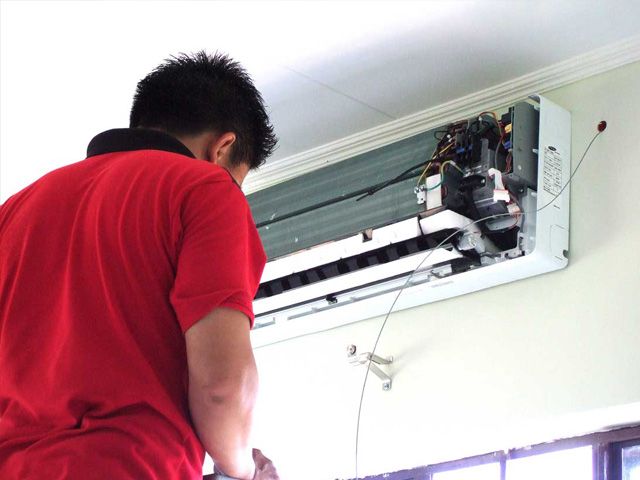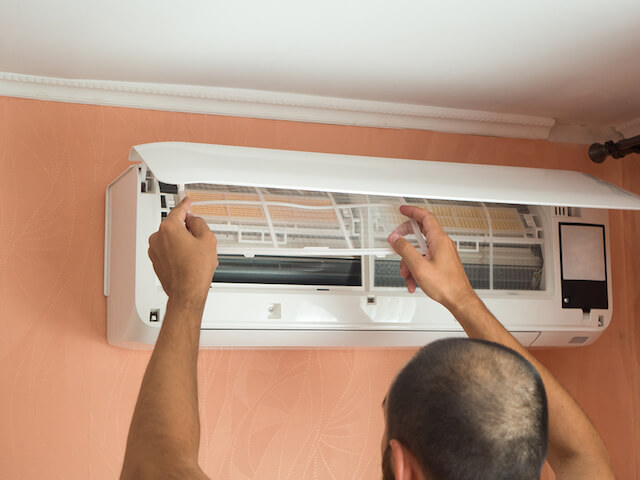
When we think about creating a comfortable home environment, we often focus on the aesthetic elements—furniture, decor, lighting—but one of the most essential yet overlooked aspects is indoor air quality. Poor air quality can affect your health, comfort, and overall well-being, but thankfully, there are simple ways to improve it. In this post, we’ll explore how air conditioning can play a significant role in maintaining good indoor air quality and keeping your home fresh.
What Is Indoor Air Quality?
Indoor air quality (IAQ) refers to the condition of the air inside buildings, particularly as it relates to the health and comfort of the people who occupy them. Air quality can be influenced by a variety of factors, including the presence of pollutants like dust, mold, pet dander, tobacco smoke, volatile organic compounds (VOCs), and carbon dioxide. Poor indoor air quality has been linked to numerous health problems such as allergies, asthma, respiratory infections, and headaches.
A significant but often underappreciated contributor to indoor air quality is the ventilation and filtration systems in our homes, with air conditioning systems playing a key role.
How Air Conditioning Affects Indoor Air Quality
Air conditioning systems serve multiple functions beyond just cooling a space. They filter and circulate air, and when maintained correctly, they can help improve indoor air quality by:
- Reducing Humidity
Excess humidity can create an environment that fosters the growth of mold, dust mites, and bacteria. Air conditioning helps control humidity levels by cooling the air and reducing moisture. When the air is drier, it becomes harder for these allergens to thrive. This is particularly important in areas with high humidity or during warm months when humidity levels tend to rise. - Improving Air Circulation
Air conditioning systems circulate air throughout your home, helping to disperse fresh air and remove stale air. Proper airflow ensures that contaminants don’t settle in one place for too long and that every room benefits from the filtration system. - Filtration of Airborne Pollutants
Many modern air conditioning units are equipped with filters that trap dust, pollen, pet dander, and other airborne particles. The filters in these systems act as a barrier, preventing pollutants from circulating in the air. Regularly changing or cleaning the filters ensures that your air conditioning system continues to work effectively in improving air quality.
The Connection Between Air Conditioning and Allergies
For individuals who suffer from seasonal allergies or have sensitivities to dust or pet dander, air conditioning can provide relief by reducing allergens in the air. By keeping the windows closed and relying on air conditioning for ventilation, you can create a more controlled environment with fewer allergens entering from outside.
The air filters in your air conditioning system are particularly important here. Many air conditioners use basic filters that can capture large particles like dust and hair, but if you’re looking for more advanced filtration, consider upgrading to HEPA filters. These filters are designed to capture smaller particles, including those that may trigger allergy symptoms.

Tips for Keeping Your Home’s Air Fresh with Air Conditioning
While air conditioning plays a significant role in improving indoor air quality, it’s not a magic fix. You’ll need to combine the right usage and maintenance of your air conditioning system with other strategies to maintain fresh, healthy air in your home. Regular servicing, such as Ang Mo Kio aircon servicing, is crucial to ensure your system operates efficiently and provides clean air. This includes cleaning the filters, checking for leaks, and ensuring that the system is running smoothly to prevent contaminants from circulating in your living space.
1. Change the Filters Regularly
One of the simplest and most effective ways to improve the air quality in your home is by changing the air conditioning filters regularly. Filters are designed to trap dirt, dust, and other particulates, but they can only hold so much before they get clogged. A dirty filter will not only reduce your system’s efficiency but also circulate contaminants back into your home. Depending on your air conditioner and the type of filter, it’s generally recommended to replace or clean filters every 1–3 months.
2. Invest in a High-Quality Air Purifier
While air conditioners can filter out some particles, they aren’t designed to trap all airborne pollutants, particularly the smallest ones. If you’re serious about improving your indoor air quality, consider adding a high-quality air purifier to your home. Look for purifiers with HEPA filters, which can capture particles as small as 0.3 microns. These devices are especially helpful for individuals who suffer from asthma, allergies, or other respiratory issues.
3. Keep Your AC Units Clean
In addition to replacing filters, it’s important to regularly clean the rest of your air conditioning unit. Dust and debris can accumulate on the coils, vents, and ducts, affecting both airflow and air quality. Cleaning your air conditioner ensures that it operates efficiently and doesn’t circulate dirt back into the air. If you’re unsure how to clean your unit, or if it’s not functioning properly, consider hiring a professional to inspect and clean it.
4. Maintain Proper Ventilation
While air conditioning helps circulate and filter air, it’s also essential to maintain proper ventilation in your home. Stale air can lead to the buildup of carbon dioxide, which can cause headaches, fatigue, and poor concentration. Open windows when possible to allow for natural ventilation, or use exhaust fans in areas like the kitchen and bathroom to help remove excess moisture and prevent mold growth.
5. Control Humidity Levels
As mentioned earlier, air conditioning helps control humidity levels, but it’s important to monitor them closely, especially in areas with high humidity. Humid environments promote the growth of mold, mildew, and dust mites, all of which can harm indoor air quality. Consider using a dehumidifier in rooms prone to moisture buildup, such as basements or bathrooms, to complement the work of your air conditioner.
6. Keep Your Home Clean
Regular cleaning is a cornerstone of good indoor air quality. Dusting and vacuuming frequently can reduce the buildup of particles that your air conditioning system may circulate. Use a vacuum cleaner with a HEPA filter to trap dust and allergens, and be sure to clean upholstery, carpets, and rugs regularly. Washing bedding and curtains also helps to reduce the accumulation of dust mites.
7. Seal Gaps and Leaks
To prevent outdoor pollutants from entering your home and affecting your air quality, ensure that your home is properly sealed. Check windows and doors for drafts, and make sure your air conditioning system is well-insulated to prevent cool air from escaping. The more sealed your home is, the easier it will be to maintain a consistent and fresh indoor environment.
Conclusion
Air conditioning isn’t just a tool for cooling your home; when used and maintained properly, it can also be a powerful ally in improving indoor air quality. By reducing humidity, filtering out airborne pollutants, and promoting airflow, air conditioners can help create a cleaner, fresher environment in your home. However, for optimal air quality, it’s important to regularly clean your air conditioning system, change filters, control humidity, and maintain good overall ventilation and cleanliness in your living space.
By combining these best practices with a reliable air conditioning system, you can enjoy a fresh, healthy, and comfortable home year-round.
Written by Amy M. Cardenas
Like Us On Facebook








